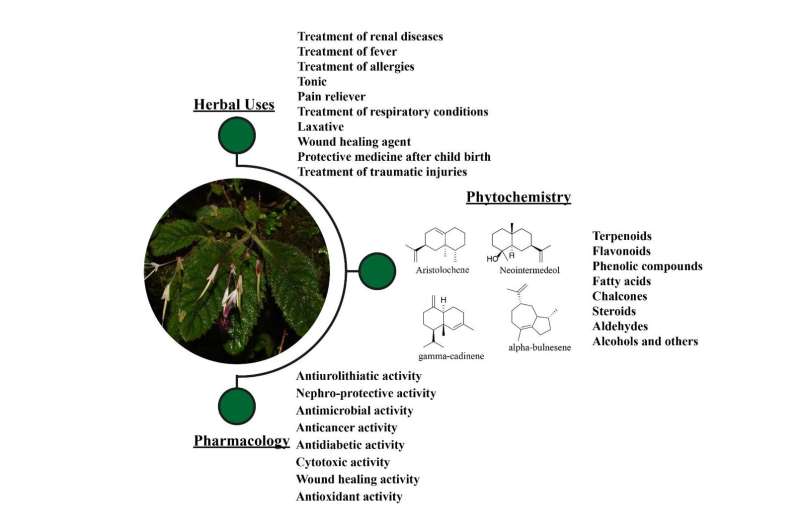Study updates ethnobotany, phytochemistry, and pharmacology study of genus Didymocarpus Wall.

The genus Didymorcapus Wall. comprises more than 100 species that are widely distributed from the Himalayas to the Malay Peninsula. Species in this genus have been used in traditional medicine as single herbs or in polyherbal formulations to treat renal diseases, chronic wounds, and traumatic injuries.
Researchers from the Wuhan Botanical Garden of the Chinese Academy of Sciences (CAS) critically assessed the available literature on phytochemistry, thenobotanical and pharmacological uses, possible mechanisms of action, and toxicology of the plant species from the genus Didymocarpus to enlighten future research.
They found that 17 species of this genus have applications in traditional systems of medicine in several Asian countries. More than 166 chemical compounds have been isolated from this genus, including terpenoids, flavonoids, phenolic compounds, and others. The genus Didymocarpus is associated with various pharmacological activities, including antiurolithiatic, nephro-protective, antimicrobial, anticancer, antidiabetic, cytotoxic, wound healing, and antioxidant activities.
This study provides a full-scale review of botanical updates, traditional herbal uses, phytochemistry, pharmacology, and toxicology of the genus Didmocarpus, which may provide a basis for better exploitation of the medicinal value of the genus Didymocarpus in the future.
The study, titled "A review on ethnobotany, phytochemistry, and pharmacology of the genus Didymocarpus Wall. (Gesneriaceae)," was published in the Journal of Ethnopharmacology.
More information: Consolata Nanjala et al, A review on ethnobotany, phytochemistry, and pharmacology of the genus Didymocarpus wall. (Gesneriaceae), Journal of Ethnopharmacology (2022). DOI: 10.1016/j.jep.2022.115404
Journal information: Journal of Ethnopharmacology
Provided by Chinese Academy of Sciences





















